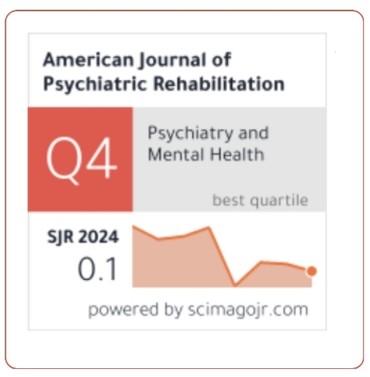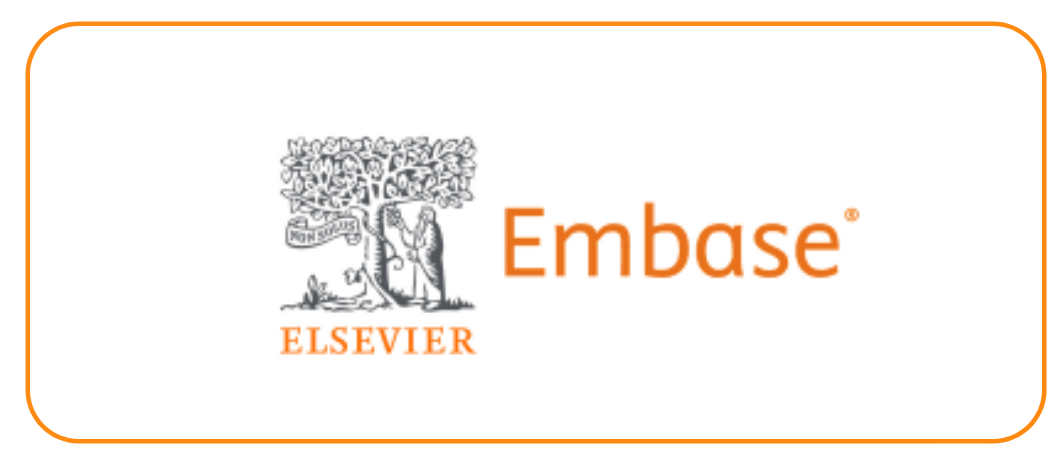Ethnic Migration In The City: Reviewing The Pull And Push Factors Of Tribes And Non-Tribes Migration In Agartala, North-East India
DOI:
https://doi.org/10.69980/ajpr.v28i1.222Keywords:
Ethnic Migration, Pull and Push factors, Tribes and Non-Tribes, Agartala city, urban ethnic composition, Tripura and North-East India.Abstract
The paper discusses the stages of ethnic migration in the city with inferences from the past and present state scenario. The paper conducts an analytical review of the 'pull' and 'push' factors in Agartala city that shape the nature of migration of various ethnic inhabitants of the city. The city's ethnic composition has been largely influenced by a push for ethnic international migration from Bangladesh (or erstwhile East Pakistan) due to Agartala being situated at the international border between India and Bangladesh. The paper focuses on how tribes and inter-tribes respond to the urban environment and adjust to city life. The study has unraveled and discussed how the presence of large non-tribes in the city affects the tribe’s migration. It analyzes the findings of migration through the evidence of statistics recorded from the census and other secondary sources available in the study's context. By looking at the specific issues related to tribal and non-tribal migration in the area being studied, this paper examines and explains the trends and behaviors of ethnic migration that are influencing the city's main ethnic makeup.
References
1. Bhagat, R. B. (2011). Emerging pattern of urbanisation in India. Economic and Political Weekly, 46(34), 10–12.
2. Kundu, A. (2009). Urbanisation and migration: An analysis of trends, patterns and policies in Asia. United Nations Development Programme, Human Development Research Paper 2009/16.
3. Siddiqui, T. (2012). Impact of migration on poverty and development. Migration and Development, 1(1), 151–162. https://doi.org/10.1080/21632324.2012.718512
4. Hazarika, S. (2013). Strangers of the mist: Tales of war and peace from India's northeast. Penguin Books.
5. Das, M. (2015). Urbanization and demographic changes in Guwahati: A study of migration patterns. Eastern Book House Publishers.
6. Singh, R. K., & Choudhury, A. (2019). Migration, urbanization, and ethnic conflicts in Imphal: A study of hill-valley dynamics. Northeast Studies Journal, 15(2), 45-62.
7. Zama, P. C., & Lalhmachhuani, R. (2020). Migration and ethnic competition in Aizawl: The case of Chakma and Bru (Reang) communities. Journal of Northeast India Studies, 10(1), 75-89.
8. Baruah, S. (2018). Ethnicity, Migration, and Politics in Northeast India. Economic and Political Weekly, 53(12), 10-15.
9. Singh, S. N., & Ningthoujam, L. (2020). Ethnic Conflict and Political Representation in Manipur: A Case Study of Imphal. Journal of Conflict Studies in Northeast India, 8(2), 41-54.
10. Chhangte, L. (2017). Migration and Ethnic Identity: The Case of Mizo and Non-Mizo Relations in Aizawl. Journal of North East India Studies, 7(1), 23-32.
11. Debbarma, S., & Roy, A. (2021). Migration patterns and urban dynamics in Tripura: A study of Agartala's socio-political landscape. Journal of Urban and Regional Studies, 27(2), 134-150.
12. Adhikari, S. (2020). Four immigrant tribes of Tripura and their influence on the state's tribal ethnic composition. Journal of Tribal Studies, 18(3), 47-63.
13. Das, P. (2015). Urban Migration and Ethnic Tensions in Guwahati, Assam. Journal of Urban and Regional Studies, 12(4), 68-80.
14. Portes, A., & Stepick, A. (1993). City on the edge: The transformation of Miami. Berkeley: University of California Press.
15. Das Gupta, M. (2014). Urbanisation and the tribals of Tripura. Mittal Publications.
16. McGee, T. G. (1975). Malays in Kuala Lumpur city: An investigation of urban prospects and processes of urbanization—Occupational mobility. In T. G. McGee (Ed.), The urbanization in the third world: Explorations in search of a theory, London: G. Bell and Sons Ltd.
17. Dikshit, K.R., Dikshit, J.K. (2014). People of North-East India. In: North-East India: Land, People and Economy. Advances in Asian Human-Environmental Research. Springer, Dordrecht. https://doi.org/10.1007/978-94-007-7055-3_11
18. Choudhuri, G. (2019). Partition, migration, and the ethnic movement in Tripura. IOSR Journal of Humanities and Social Science, 24(10), 1–8.
19. Ali, S. (2011). Migration and ethnic violence in Tripura. Faultlines, 20, 1–22. South Asian Terrorism Portal.
20. De, N. (2013). Migration in the last hundred years of Manikya rule in Tripura: Investigating the historical facts. International Journal of Social Science Tomorrow, 1(2), 1-10.
21. Devvarman, R. (1986). Tribes of Tripura: Migration and classification. Tribal Research Center.
22. Sharma, P. (2013). Duality in urban development: Marginalisation of city tribes. IOSR Journal of Humanities and Social Science (IOSR-JHSS), 16(1), 1-9. https://www.iosrjournals.org.
23. Doley, P. (2014). Changing cultural practices among the rural and urban Mising tribe of Assam, India. IOSR Journal of Humanities and Social Science (IOSR-JHSS), 19(11), 26-31. e-ISSN: 2279-0837, p-ISSN: 2279-0845. Retrieved from www.iosrjournals.org.
24. Debbarma, R. K. (2017). Agartala as a settler colonial town. The Focus| 35, The Newsletter, 77, Summer
25. Das, S. and Das, M. (2014). Income, migration and social adjustment of the tribal people in Tripura:A case study of the ‘Tripuri’ tribe. Space and Culture India, 2(1), 5-13. https://doi.org/10.20896/saci.v2i1.60.
26. Hunter, W. W. (1973). A statistical account of Bengal: Vol. VI. Chittagong Hill Tracts, Chittagong, Noakhali, Tipperah, Hill Tipperah (Reprint edition, p. 45). Delhi: D.K. Publishing House.
27. Bhattacharjee, J. B. (2004). Studies in the History of North East India. Omsons Publications.
28. Chakraborty, A. (2015). Ethnicity and Identity in Tripura: A Historical Analysis. Mittal Publications.
29. DebBarma, R. K. (2017). State Formation and Ethnicity in Tripura. Akansha Publishing House.
30. De, N. (2021). Migration in the last hundred years of Manikya rule in Tripura: Investigating the historical facts. International Journal of Social Science Tomorrow, 10(2), 45–54.
31. Hazarika, M. (2013). Ancient population migrations in Northeast India: A closer look at the ethnolinguistic prehistory. Man and Environment, 38(1), 15–29.
32. Roy, B. (2018). Demographic Change and Ethnic Relations in Tripura. Eastern Book House
33. Ganguly, N. (Ed. & Trans.). (2010). Rajmala: The Chronicles of the Kings of Tripura (Vols. 1–4). Tribal Research and Cultural Institute, Government of Tripura. (Original work compiled in the 15th century)
34. Roy, B. (2018). Demographic Change and Ethnic Relations in Tripura. Eastern Book House.
35. Singha, R. K. (2012). The Manipuris in Tripura: A Socio-Cultural Study. Akansha Publishing House.
36. Baruah, S. (2019). Migration, Identity, and Politics in Northeast India. Economic and Political Weekly, 54(27), 42-49.
37. Hunter, W. W. (1973). A statistical account of Bengal: Vol. VI. Chittagong Hill Tracts, Chittagong, Noakhali, Tipperah, Hill Tipperah (Reprint edition, p. 45). Delhi: D.K. Publishing House.
38. Allen, R. B. (2013). European mercenaries and their impact on South Asian polities. Journal of Early Modern History, 17(1), 85-104.
39. Figueiredo, J. M. (2011). Cultural legacies of Portuguese colonialism in South Asia. Journal of Lusophone Studies, 8(2), 65-78.
40. Newitt, M. D. D. (2015). A history of Portuguese overseas expansion, 1400–1668. Routledge.
41. Sen, M. (2003). Tripura aftermath. In J. Bagchi & S. Dasgupta (Eds.), The trauma and the triumph: Gender and partition in Eastern India. Kolkata: Stree.
42. Mian, H. (2006). Changes in the Muslim population of Tripura. Paper presented at the Indian Council of Historical Research National Seminar on Tribe, Peasants, and Modern Identity in North-East India c. 1800–2000 A.D., Agartala, India (Unpublished).
43. Office of the Registrar General & Census Commissioner, India. (1961). Census of India, 1961 (b): Vol. XXVI, Tripura, Part II, Sub-Part (I). Government of India.
44. Das Gupta, M. (2014). Urbanisation and the tribals of Tripura. Mittal Publications.
45. Singha, M. (2014). Matrimonial alliances between the royal houses of Tripura and Manipur in the days of monarchy. International Journal of Humanities and Social Science Studies, (I), 25–33.
46. Dikshit, K.R., Dikshit, J.K. (2014). Migration and Its Impact on the Society and the Economy of North-East India. In: North-East India: Land, People and Economy. Advances in Asian Human-Environmental Research. Springer, Dordrecht. https://doi.org/10.1007/978-94-007-7055-3_13.
47. Saha, A. (2004). Agartala and its cross-border dynamics. In A. Choudhury (Ed.), Urbanization and migration in Northeast India.
48. Sen, M. (2003). Tripura aftermath. In J. Bagchi & S. Dasgupta (Eds.), The trauma and the triumph: Gender and partition in Eastern India (p.130). Kolkata: Stree.
49. Das Gupta, M. (2014). Urbanisation and the tribals of Tripura (p. 37). New Delhi: Mittal Publications.
50. Iwamura, T., Lambin, É. F., Silvius, K. M., Luzar, J. B., & Fragoso, J. M. V. (2016). Socio–environmental sustainability of indigenous lands: simulating coupled human–natural systems in the amazon. Frontiers in Ecology and the Environment, 14(2), 77-83. https://doi.org/10.1002/fee.1203
51. Paul, M. (2009). The eyewitness: Tales from Tripura's ethnic conflict (p. 4). New Delhi: Lancer Publishers.
52. Debbarma, M. (2017). A geographical perspective on the social exclusion of the Boroks in Tripura (Doctoral dissertation). Department of Geography, School of Human and Environmental Sciences, North Eastern Hill University, Shillong, Meghalaya. Retrieved from Shodhganga.
53. Das Gupta, M. (2014). Urbanization and the tribals of Tripura. Mittal Publications.
54. Deb, M. K., & Mahato, A. (2021). Understanding the dynamics of migration from Bangladesh to Tripura: Insights from census reports. Indian Journal of Economics and Development, 17(4), 797-809.
55. Debbarma, S. C. (1997). Census Bibarani 1931 (Reprint edition). Agartala: Tribal Research & Cultural Institute.
56. Bhattacharya, A. K. (1974). Census of India 1971: A portrait of population. New Delhi.
57. Government of Tripura. (n.d.). Overview – Rubber. Department of Industries and Commerce, Government of Tripura. Retrieved from https://industries.tripura.gov.in/overview-rubber
58. Sarkar, S. (2011). Rubber plantation: A new hope for rural tribals in Tripura. International Journal of Plant Sciences, 6(2), 274–276. Retrieved from https://researchjournal.co.in/upload/assignments/6_274-276.pdf.
59. Census of India. (2011). Census by mother tongue, Agartala. Government of India. Retrieved from https://censusindia.gov.in/
60. Directorate of Census operations of Tripura, census of India, Agartala of different years.
Downloads
Published
Issue
Section
License
Copyright (c) 2025 American Journal of Psychiatric Rehabilitation

This work is licensed under a Creative Commons Attribution 4.0 International License.
This is an Open Access article distributed under the terms of the Creative Commons Attribution 4.0 International License permitting all use, distribution, and reproduction in any medium, provided the work is properly cited.









